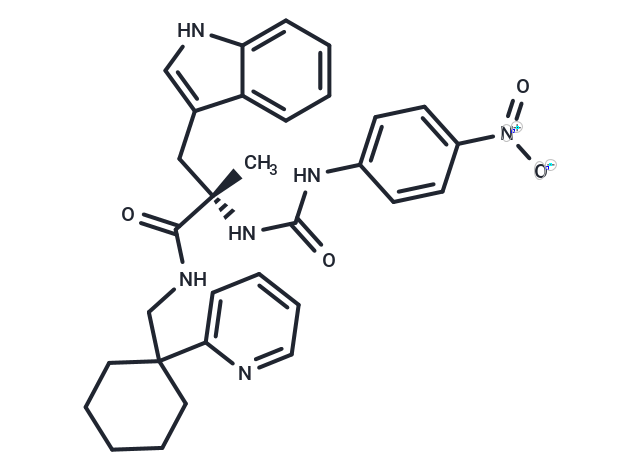Shopping Cart
Remove All Your shopping cart is currently empty
Your shopping cart is currently empty
PD 168368 is a novel, potent, competitive and selective nonpeptide neuromodulin B receptor (NMB-R) antagonist with inhibitory effects on the gastrin-releasing peptide receptor (GRPR).PD 168368 is a potent mixed agonist of FPR1/FPR2/FPR3.

| Pack Size | Price | USA Warehouse | Global Warehouse | Quantity |
|---|---|---|---|---|
| 1 mg | $81 | - | In Stock | |
| 5 mg | $179 | - | In Stock | |
| 10 mg | $272 | - | In Stock | |
| 25 mg | $546 | - | In Stock | |
| 50 mg | $818 | - | In Stock | |
| 100 mg | $1,170 | - | In Stock | |
| 1 mL x 10 mM (in DMSO) | $218 | - | In Stock |
| Description | PD 168368 is a novel, potent, competitive and selective nonpeptide neuromodulin B receptor (NMB-R) antagonist with inhibitory effects on the gastrin-releasing peptide receptor (GRPR).PD 168368 is a potent mixed agonist of FPR1/FPR2/FPR3. |
| In vitro | PD 168368 exhibits high activity and induces [Ca2+]I release in human neutrophils, with EC50 values in the nanomolar range[3]. In the human breast cancer cell line MDA-MB-231, PD 168368 suppresses migration and invasion. It also reduces epithelial-mesenchymal transition (EMT) by upregulating E-cadherin and downregulating vimentin. At a concentration of 5 μM, PD 168368 inhibits migration and invasiveness in breast cancer cells[4]. Furthermore, at a concentration of 10 μM, PD 168368 suppresses the activation of the mTOR/p70S6K/4EBP1 and AKT/GSK-3β pathways in breast cancer cells[4]. |
| In vivo | In mice, PD 168368 potently inhibits the in vivo metastasis of breast cancer. Administered at a dose of 1.2 mg/kg through intraperitoneal injection for 30 days, PD 168368 effectively inhibits breast cancer metastasis[4]. |
| Synonyms | PD168368 |
| Molecular Weight | 554.64 |
| Formula | C31H34N6O4 |
| Cas No. | 204066-82-0 |
| Smiles | C[C@@](Cc1c[nH]c2ccccc12)(NC(=O)Nc1ccc(cc1)[N+]([O-])=O)C(=O)NCC1(CCCCC1)c1ccccn1 |
| Relative Density. | 1.300 g/cm3 (Predicted) |
| Color | White |
| Appearance | Solid |
| Storage | store at low temperature | Powder: -20°C for 3 years | In solvent: -80°C for 1 year | Shipping with blue ice/Shipping at ambient temperature. | ||||||||||||||||||||||||||||||
| Solubility Information | DMSO: 20 mg/mL (36.06 mM), Sonication is recommended. DMF: 5 mg/mL (9.01 mM), Sonication is recommended. | ||||||||||||||||||||||||||||||
Solution Preparation Table | |||||||||||||||||||||||||||||||
DMF/DMSO
DMSO
| |||||||||||||||||||||||||||||||
| Size | Quantity | Unit Price | Amount | Operation |
|---|

Copyright © 2015-2025 TargetMol Chemicals Inc. All Rights Reserved.